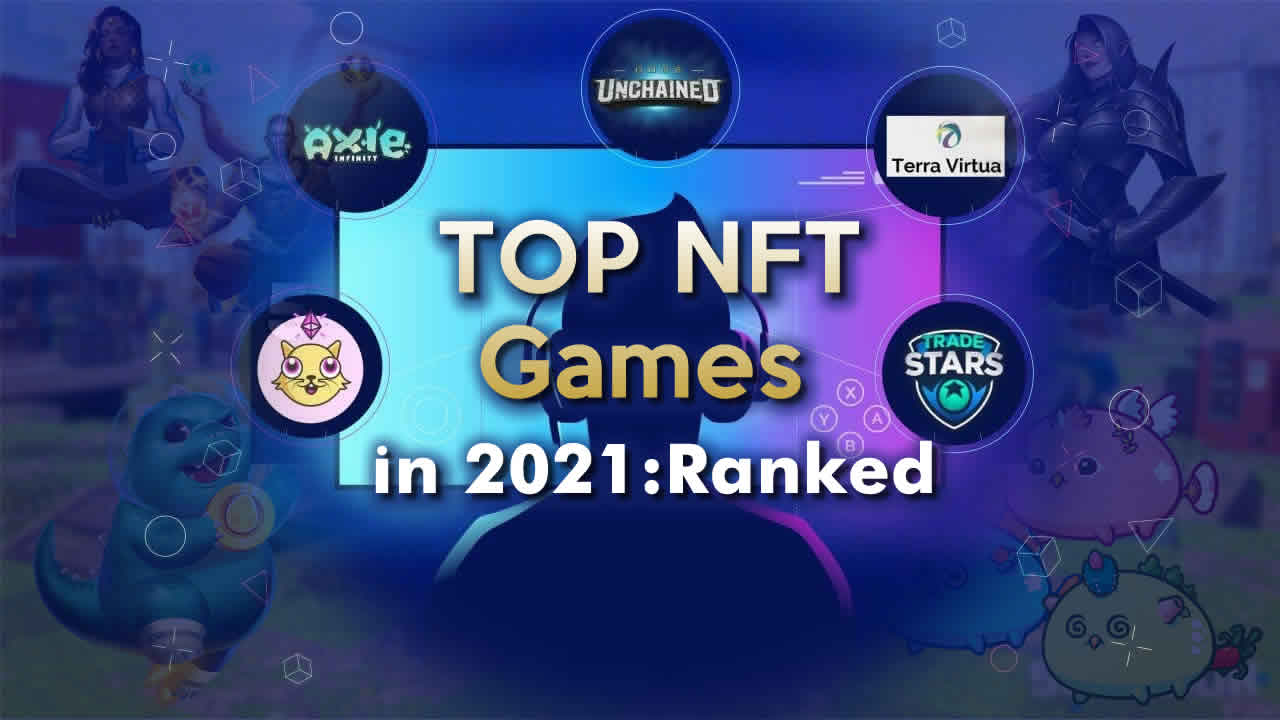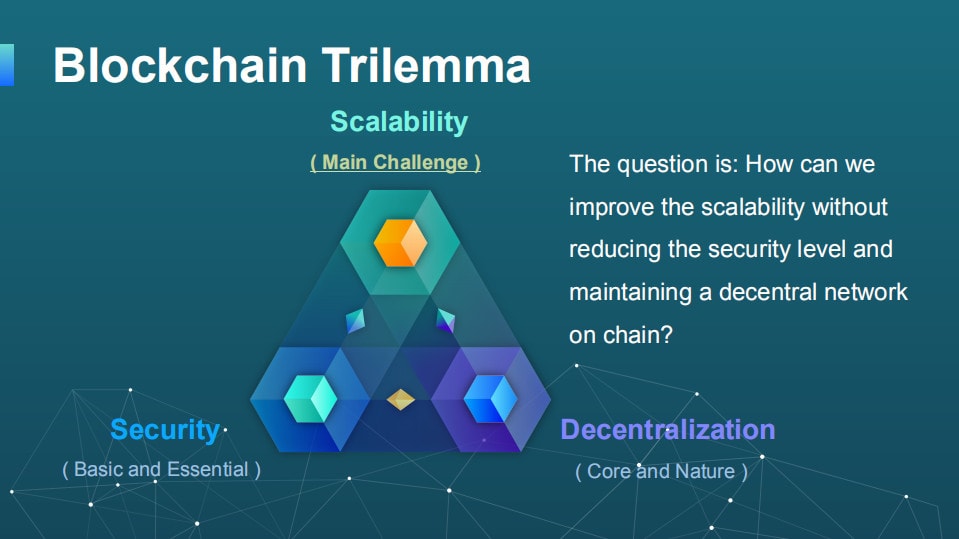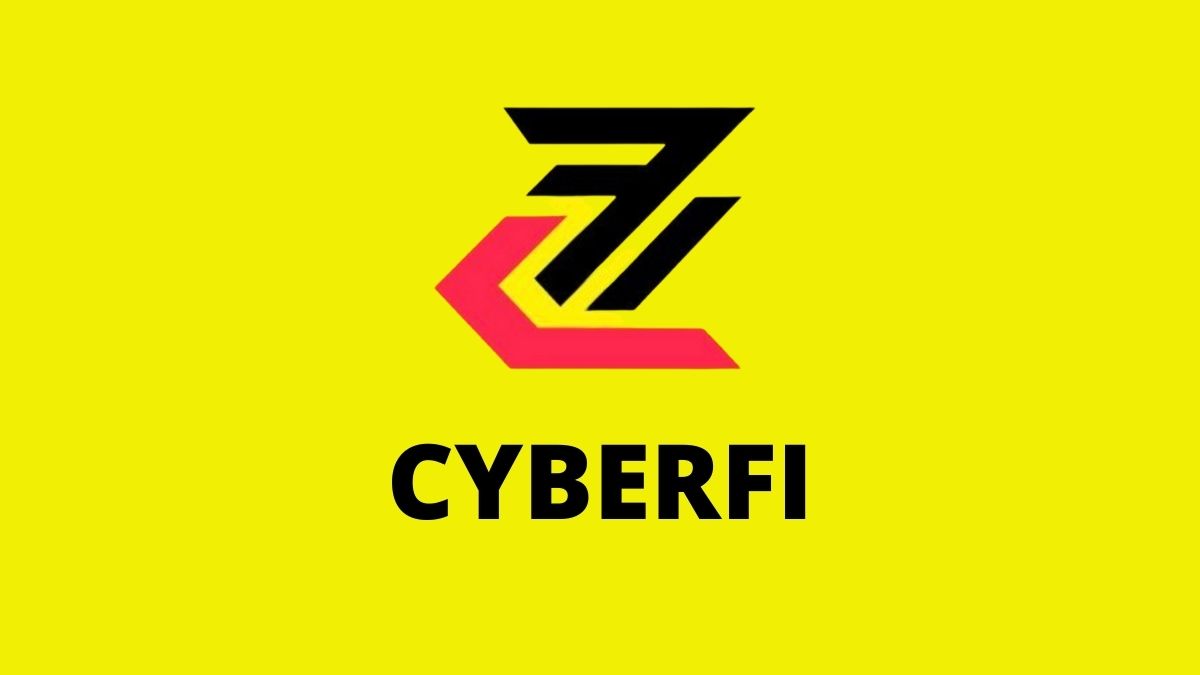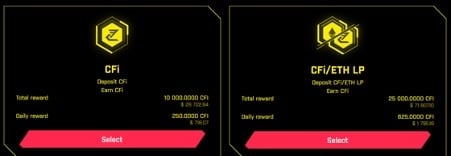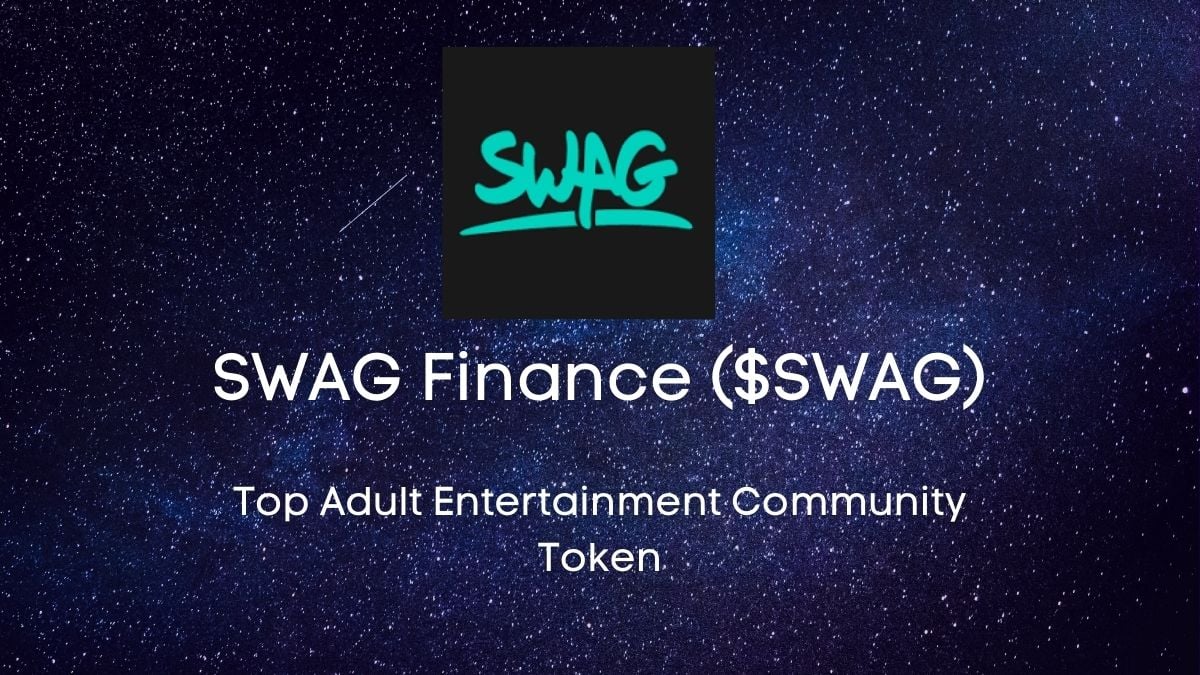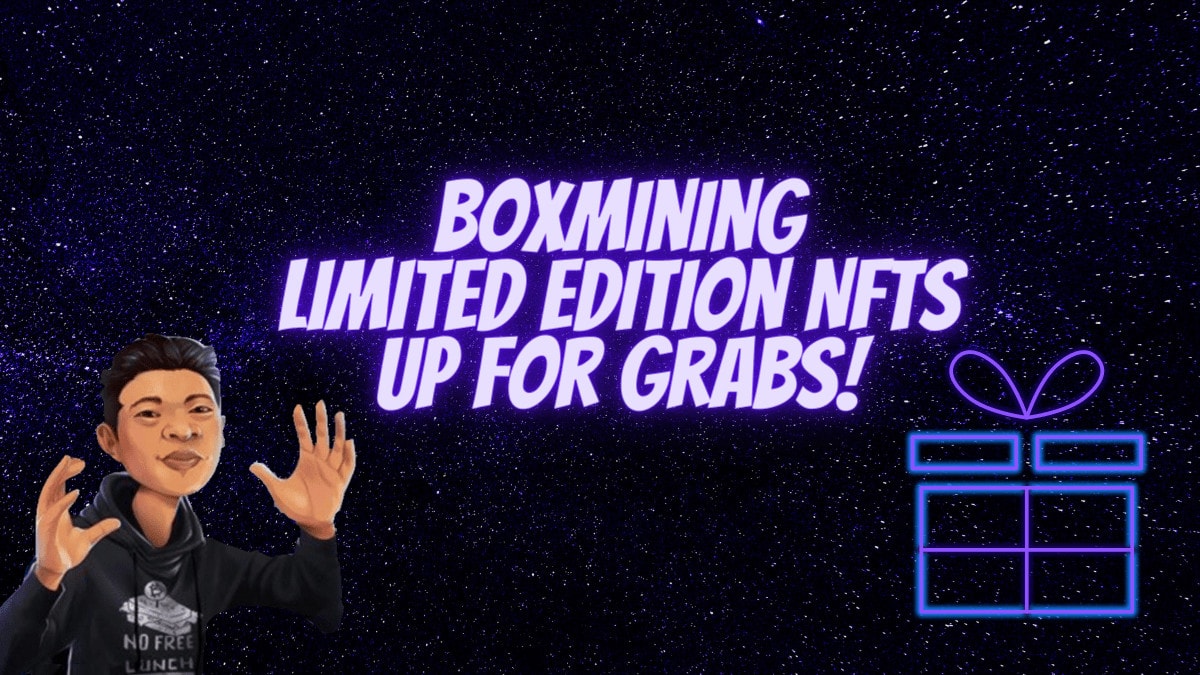The introduction of NFTs (non-fungible tokens) has continued to prove time and time again that they have the ability to transform the gaming industry as we know it. The emergence of NFTs brings about a new and exciting era in which gamers take on even more critical roles in the gaming economy and receive lucrative rewards in the process.
This gaming paradigm is beginning to take shape as game developers are progressively adopting blockchain technology to produce more immersive gaming experiences. In this guide, we will go through some of the top NFT games introduced this year.
But before diving in, let’s first discuss the basics of an NFT-based game.
What Are NFT Games?
NFT games combine conventional gaming features with novel gameplay mechanisms to provide players more control over in-game assets such as skins, characters, weapons, virtual lands, and much more. This is made possible by launching games on blockchains and anchoring them in economies powered by digital assets. These digital assets are often NFTs so that they are distinctive and tamper-proof.
The adoption of NFT token standards have allowed game developers to preserve the rarity and uniqueness of some of these in-game items. This is why some blockchain game assets are considered more expensive than others.
With the NFT system in place, the players can claim ownership of game assets through 3 main strategies. They can create or breed new characters, purchase digital items on native or third-party marketplaces, or unlock and earn new items. Regardless of how the player chooses to access these game assets, they have exclusive ownership rights over them. The player may then distribute or sell these assets and keep all the profits.
What Are the Top NFT Games in 2021?
Like all emerging and established sectors, certain platforms have positioned themselves at the top of the NFT gaming world. These games are at the forefront of the current NFT craze because they have successfully integrated NFTs with popular game themes. As a result, players get to enjoy some of their favourite game genres and at the same time engage with a profitable NFT market.
Without further ado, here are some of the top NFT games in 2021.
1. Axie Infinity

Axie Infinity takes inspiration from the Pokemon game franchise and adds a blockchain twist to make the final product even more interesting. Players breed and gather NFT-based digital creatures called Axies in this Ethereum-based game with the primary goal of combating other players.
Each Axie has its own unique genetic fingerprint. As a result, the strengths and shortcomings of Axies are handed down to their descendants. These digital creatures can be traded on Ethereum NFT markets, with prices varying depending on their rarity and distinctive characteristics. To begin playing the game, players have to purchase 3 Axies.
Smooth Love Potion ($SLP) — the platform’s native ERC-20 utility token – is awarded for each mission, player-versus-player (PvP) fight, and adventure mode that the player completes. Players pay a certain amount of $SLP for each attempt to breed a new Axie. $SLP can also be bought through exchanges.
Another ERC-20 token native to Axie Infinity is Axis Infinity Shard ($AXS), which functions as the platform’s governance token. It will anchor the game’s staking service scheduled to go live at some point in 2021.
2. MetaWars

MetaWars is a futuristic sci-fi multiplayer strategy and roleplaying game in space that allows players to monetize and earn from the game’s war economy. Players can immerse themselves in realistic space exploration through the vast MetaWars galaxy that is constantly evolving and shifting from the collective actions of every player.
MetaWars enables cooperation with other players to discover and revolutionize different galaxies through missions while earning NFTs and collecting limited edition robots through various auctions. Players can stake and complete challenges to earn $WARS tokens, the in-game and governance token.
The gameplay also allows players to widen their army with unique ships, classes, and various optimization options. Players can combine modules, weapons, devices and equip perks, helping their characters level up their strength, rank up and receive amazing rewards across the metaverse.
Learn more about MetaWars in our article MetaWars ($WARS, $GAM): NFT Gaming in Space.
3. Splinterlands

Splinterlands is a tradable card game that lets users earn as they play, similar to Gods Unchained. Players can earn rewards when they win card matches.
To begin playing Splinterlands, you must first purchase a starting pack of cards, create a Steem account, and then reveal the purchased cards in the game.
You could be lucky and get rare cards in your first set of bought cards in some situations. You could also come across multiples of the same sort of card. If that’s the case, you can combine identical cards to increase their strength or sell one of them in exchange for cryptocurrency.
After you’ve become comfortable with the cards, you may go on to combat other players or take part in missions. The outcome of these actions will influence whether or not you earn more cards.
4. The Three Kingdoms
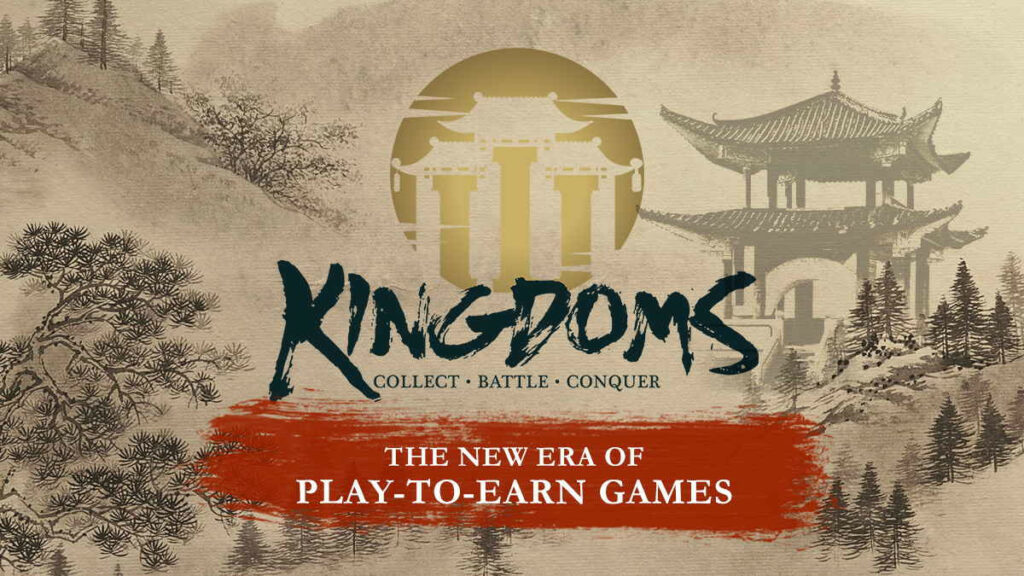
The Three Kingdoms is a strategic third-generation NFT game that is based on the historical characters of the Three Kingdoms period in ancient China. The play-to-earn game is the first to incorporate the idea of battling and besieging cities through staking, complete with a deep and engaging storyline, providing a breath of fresh air to the blockchain gaming landscape.
The team behind The Three Kingdoms set out to build an NFT game that features multiple methods never seen before in the blockchain gaming market to earn tokens. $TTK is the game’s native token, used to purchase new characters in the NFT marketplace, upgrade armies, and invest in land. It can also be staked to farm more valuable NFTs.
$TTK will also be needed to acquire $CHI, the secondary in-game token. Inspired by the actual use of Chi in Chinese history as the energy that runs through all living things, players will be able to convert $TTK to $CHI through the mastering of energy. Some future uses of $CHI include the ability to besiege cities, battle other players and even fuse new heroes.
Read more about it in our article The Three Kingdoms: The New Era of GameFi.
5. Gods Unchained

Gods Unchained is a free-to-play game designed to infuse elements of NFT into a familiar card trading gaming genre. Players accumulate cards by purchasing them from other players or winning PvP matchups where the quality of cards and the gaming skill of players often determine the winner. Notably, more emphasis is being placed on skills and strategy. This is because the game utilizes a ranked game mode where players with the same ratings are matched.
You win matches when your gameplay causes your opponent’s life to drop to zero before yours. For every win, you receive experience points. As soon as the experience bar is filled up, you will move to the next rating or level and receive a new pack of cards to add to your collection.
Note that each card is backed by an ERC-721 token. Therefore, you can trade them on the platform’s native marketplace or the open market. Those opting to sell cards within the game ecosystem will receive the platform’s native token, $GODS, as payment.
It is worth noting that the $GODS token has not been officially launched at the time of writing. Be sure to confirm that the development team has released GODS tokens to the crypto market before proceeding to purchase or receive any token marketed as GODS tokens.
6. The Sandbox 3D

The Sandbox is a voxel-based game metaverse and one of the most popular NFT gaming platforms for creating and trading virtual assets. Players may modify and monetize voxel objects in this game.
Consider it a blockchain-based version of popular games like Minecraft and Roblox. The platforms provide tools for creating and animating objects, which can then be sold on markets. On the platform, users can also develop and play their own games.
$SAND, an ERC-20 coin, has been presented as the metaverse’s native token by Sandbox 3D. Players may use this to buy in-game products from the platform’s marketplace. There are also $LAND tokens, which are NFT tokens that are among the most valuable and sought-after assets in the Sandbox game.
7. Battle Racers

Battle Racers is inspired by popular games such as Super Mario Kart and F-Zero, as its name suggests. The goal of the game is to mix various weaponry and equipment to build the most powerful vehicles possible. Players may mix and match various components and weaponry to get an edge on the arcade-style circuits. You may register your treasured or winning automobiles as NFTs on the blockchain and then sell them for cryptocurrency on OpenSea.
Each player aims to build the ultimate automobile by prioritizing various talents and attributes. You could choose handling over speed or defense over firepower, all in the hopes of emerging victorious.
8. Cryptosnake
The gameplay of Cryptosnake is really easy. It’s based on the old-school snake game. Cryptocurrencies on the Binance Smart Chain (BSC) blockchain provide food for your snake. The more you consume, the higher your pet’s stats will be. You may also use fiat to level up your snake, which will allow you to earn even more money in the future.
If the snake doesn’t make you nostalgic, the gameplay may appear monotonous. On the other hand, you spend less time on in-game activities that aren’t essential and instead earn more consistently.
9. Gold Fever

Gold Fever is a jungle-themed role-playing game where players choose a character and try to outplay other players for a chance of mining gold in the form of the game’s native token, $NGL. Players also go about collecting limited NFT-based items like clothes, weapons and other supplies.
Similar to the workings of most NFT games, Gold Fever tries to enable blockchain-initiated scarcity for its in-game assets. You can pick any of the main characters of the game and play your part in the formation of a fiercely contested gold economy.
Note that the in-app game items are tradable on marketplaces. Therefore, you can exchange $NGL earned for fiat or cryptocurrencies on exchanges or earn by trading collectibles on NFT marketplaces.
10. Neon District

Neon District is a cyberpunk role-playing game (RPG) that allows users to collect characters, gears and crafts. All of the game objects are blockchain components and almost everything may be purchased or sold. As is usually the case, the price is determined by supply and demand.
The goal is to build a team and compete against other players in missions or real-time combats. One multiplayer competitive game mode, called Neon Pizza, in particular, pitches players against each other for the chance of earning the platform’s native token – $Neon, as well as gears, parts and so on.
All you need to do is send your characters on pizza delivery runs to feed hungry citizens. You can also take up a more villainous strategy by ambushing the pizza delivery team of other players and stealing their earnings.
$Neon earnings can be used to purchase characters, weapons, parts, armors, juice, and other in-game items required to upgrade characters. The tokens are now NFTs that are linked to the blockchain, but they cannot yet be traded on a genuine cryptocurrency exchange.
Conclusion
NFT games are not tough to master as they make use of popular gaming genres, with the added combination of blockchain features that are ideal for establishing rarity and uniqueness. With the raging popularity of NFT games, more and more people are starting to realize that it is possible to make a decent profit from these games.
These games are also highly entertaining and have made great strides for the understanding and adoption of blockchain. It is exciting to see the next big game that will emerge and where the industry will go from here.
